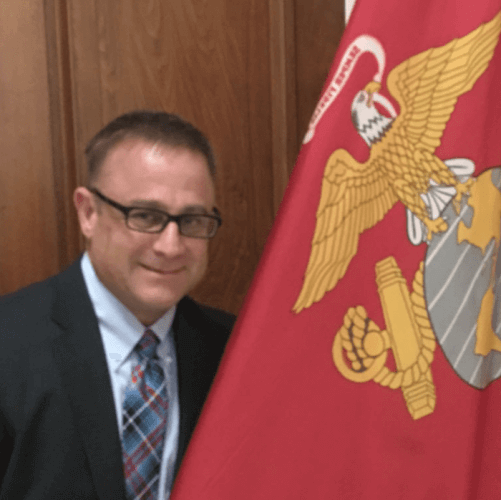
Forklift Safety Tips to Avoid Injuries – Preventing Accidents at Work

Forklift Safety Tips to Avoid Injuries – Preventing Accidents at Work
Forklifts are necessary in many industries, but with the use of forklifts comes a risk of serious accidents. We’ve seen footage online of forklifts tipping over after workers move pallets of goods or massive cement bags. Although such videos are labeled as “funny,” nothing is hilarious about suffering severe injuries after a forklift accident.
Ehline Law and our forklift personal injury attorneys have extensive experience representing injured workers against negligent employers across multiple industries. We have put together a mini-guide on safety tips every worker should follow while operating a forklift in the workplace to prevent injuries.
Where Are Forklifts Used?
Forklifts are powerful industrial trucks used across multiple industries to lift and transport massive loads of goods or commodities quickly. Like any other machine used in industries, operating a forklift carries risks, and forklift operators need to have the necessary safety measures to prevent forklift accidents.
According to the Occupational Health and Safety Administration (OSHA), 85 fatalities and 34,900 serious injuries result from forklift accidents every year in the United States. What’s alarming is that 25% of all forklift accidents happen due to a lack of proper operator training, highlighting the importance of educating operators on appropriate safety procedures.
Common Causes of Forklift Accidents in the United States
According to the Industrial Truck Association, 42% of forklift fatalities involve vehicle tip-over, while 36% involve people crushed by a forklift.
Other causes of forklift accidents include the following:
- Run over by a forklift
- Struck by falling material
- Falling from a platform.
The major contributory factors to forklift accidents and vehicle tip-overs are the lack of proper training, forklift operator recklessness, and environmental factors involving uneven or unstable surfaces.
15 Critical Forklift Safety Solutions
Let’s go over the top 15 forklift safety tips to avoid injuries at the workplace.
- Get Certified
According to OSHA standards, employers must hire and allow licensed and trained forklift operators to operate a forklift. Over time, a forklift operator might lose some skills or face age-related issues, such as weakened eyesight, that can affect their ability to use a forklift safely.
Employers are responsible for evaluating their employees’ performance and providing additional training on safety measures once every three years.
- Wear Proper Clothing
When operating a forklift, operators must dress appropriately and have proper clothing, such as high-visibility jackets, safety boots, and hard hats.
Ensuring proper clothing can help prevent injuries and increase the visibility of other forklift operators at the workplace.
- Know the Forklift Type
There are several classes of forklifts, and each type has its weight limit, structure, turning radius, and other specifications that can affect how the forklift operates. For example, loading a forklift beyond its weight limits can increase the risk of an accident.
Forklift operators need to know the type of forklift they are driving and follow the recommended OSHA’s best safety practices.
- Conduct Routine Inspections
Forklift operators must inspect their forklifts before use. Daily checks can help identify problems or defects with the forklift, preventing major accidents. Management should remove damaged forklifts from service until they are fully repaired.
OSHA recommends the following forklift safety checks to help determine any problems with the equipment:
- Test the forklift’s operating controls, such as brakes, steering wheel, etc.
- Check the forklift’s upright (also known as mast), the part of the forklift that lifts, lowers, and positions the load, for any damage. Inspect mast and overhead guard.
- A forklift uses several types of fluids, including hydraulic, brake, engine, fuel, and coolant. Check the fluid levels.
- Check for any fluid leaks.
- Check the vehicle’s tires.
- Check the condition of the forks. If you see any cracks or distortions, report them to management and avoid using that forklift.
- Check for any potential hazards.
Forklift operators must follow OSHA’s best safety practices and the rules and regulations of the workplace to protect themselves and others.
- Ensure Visibility
When operating a forklift, operators must maintain visibility, including keeping the fork low to the ground. When the operator loads the forklift, their visibility may be limited. In such cases, operating a forklift in reverse is the best way to ensure visibility and prevent accidents from happening.
According to OSHA, the following are some of the best practices to ensure greater visibility when operating a forklift:
- Make eye contact with people in the workplace.
- Keep your eyes on the direction you’re traveling in.
- Use rear-view mirrors when necessary to ensure visibility.
- In places where there is a need for additional lighting, have your forklift lights on at all times.
- Follow a Floor Marking System
Large signs on the floor can help operators identify physical hazards and increase worker safety at the workplace. The employer is responsible for ensuring that forklift operators follow a floor marking system when operating a forklift.
Yellow signs may indicate physical hazards, while red signs can show fire hazards, fire equipment, and more. A floor marking system allows for a safer route for all operators to follow and ensures a smooth traffic flow, reducing the risk of forklift accidents.
Floor markings and signs are not only for the employee’s operating equipment but also for the pedestrians to keep them away from the worksite or forklift paths.
- Follow Weight Limits
As mentioned earlier, each type of forklift has a specific weight limit that the operators must know. Exceeding the weight limit can cause the equipment to tip over, resulting in serious forklift injuries and property damage.
- Avoid Carrying Extra Workers
Forklifts are not designed to carry workers, so forklift operators should not give lifts to employees unless the forklift has a second seat. To take workers from one destination to another, the forklift operator must equip the forklift with the necessary equipment, such as a safety cage.
- Stay Within the Stability Triangle
When using a forklift, the operator must sit comfortably where they have access to all the controls. They must also ensure that their hands and shoes are dry before sitting to avoid slips. Besides securing yourself, paying attention to the forklift’s stability is essential.
Like any vehicle with a center of gravity, forklift operators must pay attention to the vehicle’s stability. The stability triangle is a three-point suspension system that every forklift operator must know before operating the equipment. Operators must stay within the triangle to prevent tip-overs.
- Secure the Load
Before carrying loads on a forklift, operators must check them for balance, secure them with ropes, and ensure that the pallets or loads do not exceed the forklift’s weight limit. It’s best to tilt the load backward before driving to ensure maximum stability.
- Drive Appropriately
It’s always best for operators to plan their travel before setting off to their destination to prevent accidents. Sudden movements and turns can cause the loaded forklift to tip over, resulting in serious injuries.
Always follow the appropriate speed limits and drive carefully. If the forklift tips over, operators must stay inside the vehicle, hold the wheel, and brace their feet rather than jump out.
- Ensure a Safe Operating Distance
Other equipment and vehicles could be present at the worksite, which is why forklift operators must remain mindful of their surroundings. They should maintain a safe operating distance to allow enough room for safe braking to avoid collisions with other equipment and vehicles.
- Avoid Forklift’s Hazardous Areas
A forklift’s lifting mechanism can fail at any time, making it hazardous for workers or pedestrians to stand under. If the lifting mechanism has a load, it is best to stay clear of it. Ensure you’re away from the forklift’s mast, as it can lead to severe injuries in case of a malfunction.
- Refuel and Recharge
To prevent unfortunate incidents, forklift operators must always maintain a fully fueled and charged forklift. Charge and fuel the forklift in a well-ventilated area while the equipment is switched off.
- Park Forklift Properly
Operators must park the forklifts in their designated areas after their shifts. Employers are responsible for allocating proper parking areas that do not obstruct pathways or entrances/exits. Before switching off the forklift in the parking area, operators must lower the forks and apply brakes.
How to Improve Forklift Safety at Workplace?
Although buying or renting a forklift from a reputable company is a fantastic way to ensure safe equipment, the forklift operator is critical to improving workplace safety.
According to an OSHA study, the accident rate at workplaces where operators received proper training declined by 30%. Proper training protects operators from injuries, death, fines, higher insurance premiums, unscheduled maintenance costs, and liabilities.
Besides proper training and following forklift safety tips, maintaining an obstacle-free work environment and conducting routine maintenance can help improve forklift safety at the workplace.
Can You Sue Your Employer for Forklift Accidents?
Employers benefit from workers’ compensation, which covers medical expenses and lost wages for injured employees due to workplace accidents. In return for such benefits, employees forego their rights to sue the employer if their accident occurred due to their negligence.
However, in certain egregious circumstances, employees may be able to bring a civil action against their employer and hold them accountable for their loss. Whether you require help with workers’ compensation or want to know whether you have a valid lawsuit against your employer, speaking to an experienced personal injury attorney is crucial.
Schedule a Free Consultation with Ehline Law Forklift Personal Injury Lawyers
If you’re facing trouble with your workers’ compensation claim or suffered injuries due to your employer’s extreme negligence, contact us at (833) LETS-SUE for a free consultation with our experienced personal injury attorneys to discuss your case with a professional, compassionate, and aggressive lawyer in Los Angeles County, CA today!
Categories

Michael Ehline
Michael Ehline is an inactive U.S. Marine and world famous legal historian. Michael helped draft the Cruise Ship Safety Act and has won some of the largest motorcycle accident settlements in U.S. History. Together with his legal team, Michael and the Ehline Law Firm collect damages on behalf of clients. We pride ourselves in being available to answer your most pressing and difficult questions 24/7. We are proud sponsors of the Paul Ehline Memorial Motorcycle Ride, and a Service Disabled Veteran Operated Business. (SDVOB.) We are ready to fight.
Go here for More Verdicts and Settlements
